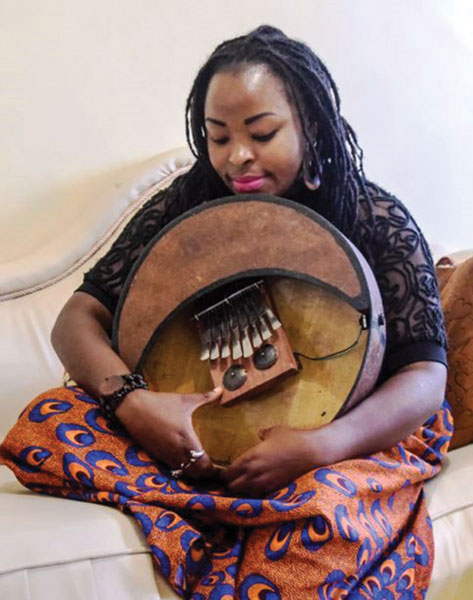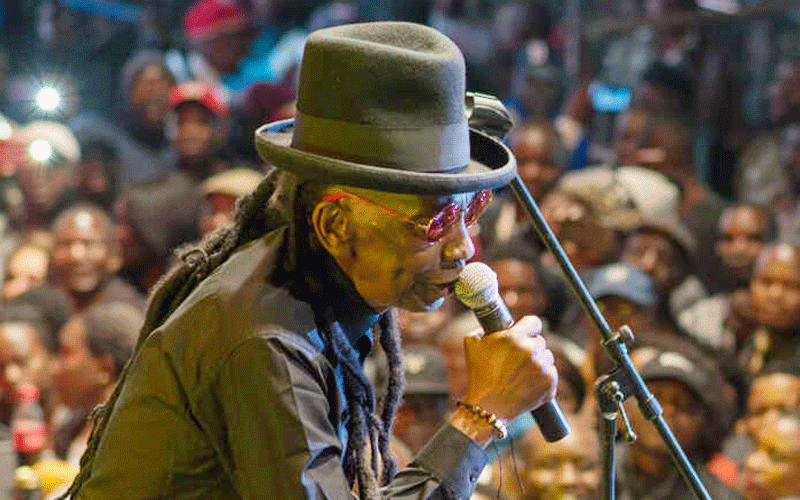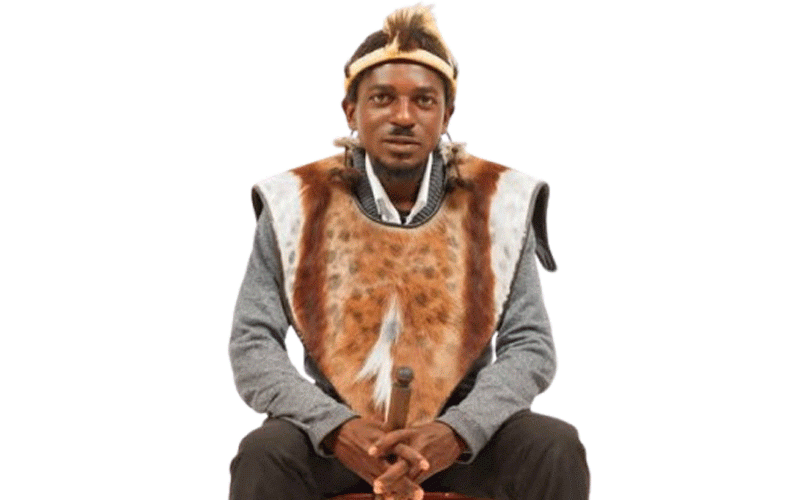
in the groove:with Fred Zindi
Recently was Zimbabwe’s Culture Week. This was complemented by an international event in which Google Doodle was also celebrating Zimbabwe’s national instrument, the mbira, for Zimbabwe’s Culture Week.
To the uninitiated, the Google Doodle is a game, which appears on the Google platform. We often use the Google platform on the internet to answer our queries on things we either do not know or things we are not sure about.
The Google Doodle follows a Zimbabwean girl’s experience of discovering and learning to play the mbira.
The Google Doodle begins with an animation of a young girl walking with her mother, stopping to listen to an elderly man playing the mbira. Google users are then invited to learn to play a virtual mbira, by hovering their mouse over the keys, as they play a traditional song called Nhemamusasa. (Nhemamusasa has become a classic song, which every Ethnomusicology student who attends the Zimbabwe College of Music has to learn.)
The second chapter of the animation sees a man making a mbira for the young girl and the third sees the girl, now older, playing the mbira as others play various instruments and dance.
Finally, the animation sees the young girl as an adult, playing with a band to a large crowd. In the end, she gives away her mbira to a young boy, as her journey comes full circle. Her journey also reflects the circular nature of mbira music, which has no phrases, and no beginning or end.
Throughout the Google Doodle, users will also get to play songs including Chemutengure, another of Zimbabwe’s classics.
- Chamisa under fire over US$120K donation
- Mavhunga puts DeMbare into Chibuku quarterfinals
- Pension funds bet on Cabora Bassa oilfields
- Councils defy govt fire tender directive
Keep Reading
Lisa Takehana, who designed the game, said: “Because we’re celebrating a musical instrument, we knew we wanted our audience to experience the beauty of the mbira by playing a digital version and listening to a variety of songs that spanned from traditional to contemporary.”
The Doodle team sums it up with these words: “We’ve tried to give people around the world a taste of a broad and deep cultural tradition that isn’t very well known outside its homeland, and to give the people of Zimbabwe a chance to stand up and be seen, to be proud of what is uniquely theirs.
“I hope we’ve given people just enough to pique their curiosity and encourage them to go out and learn more; maybe even pick up an instrument and give it a try!”
Several Zimbabweans were involved in consultations before this game was put up on Google. These include Albert Chimedza from the Mbira Centre in Harare, Tendai Muparutsa, who is the artiste in residence in African Music Performance at Williams College in the United States, and Shirley Chikukwa. Other players also on the consultation team were Nathan Miller of the mbira group Timbila, Banning Eyre and Nora Balaban.
On being asked whether mbira should go international, Chimedza had this to say: “It is good that we share the mbira with the rest of the world”.
Clayton Ndlovu agreed with Chimedza and declared that we Zimbabweans have learned a lot of instruments from the Western world such as the keyboards, violins and brass. What is wrong with sharing our traditional instruments with them? Mbira is no longer a sacred instrument.
However, other mbira musicians, who were left out on this project, had no kind words for Google.
Tanyaradzwa Tawengwa, a Zimbabwean mbira player, who is also based in the United States, wrote: “Cultural Vampires: White Exploitation of Zimbabwean Mbira Music!” This was endorsed by Wellington Ziwenga Chiwashira who remarked: “Google was sneaky and highly exploitative. They only gave magwenyambira (mbira players) T-shirts bought from the dollar stores.”
Tanyaradzwa, being a mbira player herself who claims that her grandmother was a svikiro (spirit medium), does not like the idea of a white man teaching about her traditional Zimbabwean instrument. She says that when she went to America’s prestigious Princeton University, she discovered that all the books in the library on mbira were wrong. This included the spellings of certain words and the understanding of the cosmological and spiritual grounding of mbira practices.
To her, the level of misunderstanding was offensive — and all these books were written by white men. As she put it: “You can imagine the discomfort I felt when a white man walked in to teach us the ‘Music of Africa’ course.”
Is it the skin colour of the mbira teacher or his knowledge about mbira that matters, I wonder?
Paul Berliner, a white man, who spent six months in Zimbabwe as Ephat Mujuru’s apprentice while he was learning to play mbira and writing his book — The Soul of Mbira — is, in my opinion, a fine mbira musician. I have on several occasions listened to him perform, and I have read his book. In my opinion, he is as good, if not better, than some of the black mbira players in this country. Should he, therefore, not teach mbira because he is white?
Mbira is the name given to both the instrument and the music coming out of that instrument. It is mystical music which has been played for over a thousand years by the Shona people of Zimbabwe.
The musicians who popularised mbira in Zimbabwe in the 1980s and 1990s include the late Mujuru, Dumisani Maraire and his late daughter, Chiwoniso.
To date mbira is still a popular instrument. Exponents of the instrument include Jah Prayzah, MaNgwenya Diana Samkange, Alexio Kawara, Stella Chiweshe, Hope Masike and Mbira dzeNharira, among others.
In the past, mbira was associated with evil spirits by white missionaries and a lot of traditional mbira players in Zimbabwe disappeared when this country was ruled by whites until its revival after independence in 1980.
Also, in the early 1980s there was a great revival of interest in Zimbabwean culture. Hundreds of mbira players suddenly emerged. Even those who could not play the instrument tried the mbira sound on guitars. People like Jonah Sithole and Leonard “Picket” Chiyangwa who were accomplished guitar players went on to back Thomas Mapfumo’s Blacks Unlimited Band using guitar staccato sounds which sounded like mbira. Later on, Chartwell Dutiro, a real mbira player, joined the band to enrich the mbira sound.
Mbira, in Zimbabwe, was originally played by men only. Women were not forbidden from playing mbira, but in tradional society a woman who played mbira was frowned upon. However, due to urbanisation and Western acculturation, which led to the disintegration of traditional society, a lot of women decided to learn to play the instrument. As Stella Chiweshe, one of Zimbabwe’s leading female mbira players, put it: “I counted the number of fingers on my left hand. They were five. I then counted the number of fingers on my right hand. They also came to five. I then looked at the number of fingers on a man’s hands. They looked the same as mine. So I said to myself, ‘What the hell! If a man can play mbira, I can too’.”
Although the oldest well-known type of mbira in Zimbabwe is Mbira dzeVadzimu, the nyunga nyunga is the most popular type used by many emerging players.
Mbira dzeVadzimu are highly ritualistic instruments which are often connected to spirits, but are also used for secular amusement. As an instrument for ritual purposes, this is the one often picked at occasions such as ancestor worship.
Most of today’s mbira players have no ritual roots. They simply play it because they love the sound of the instrument.
It is in this context that Google Doodle has come out to demystify the little knowledge the world had about mbira. With all the controversy going on about this exposure, I leave it to the reader to decide whether this is a good thing or not, but is it not time to be proud of what is uniquely ours?
l Feedback: [email protected]











